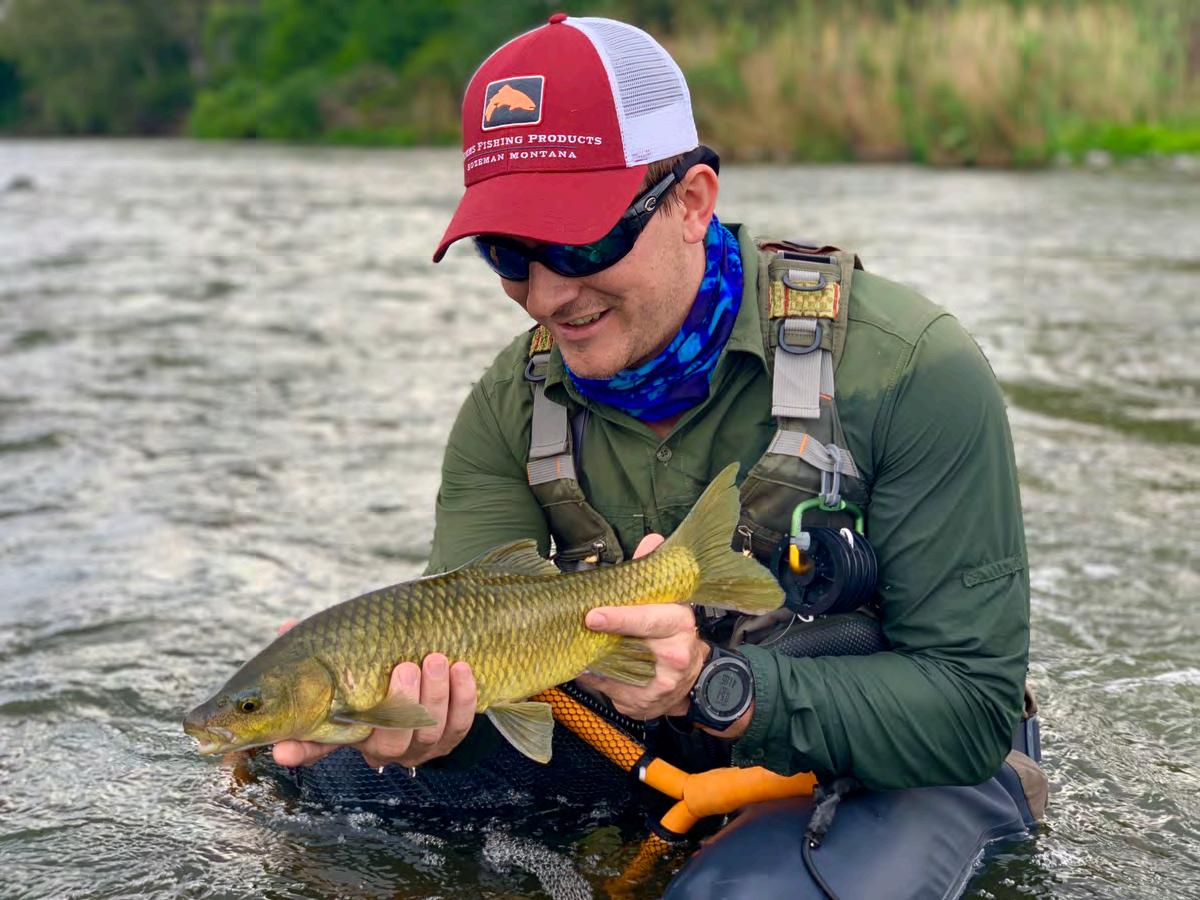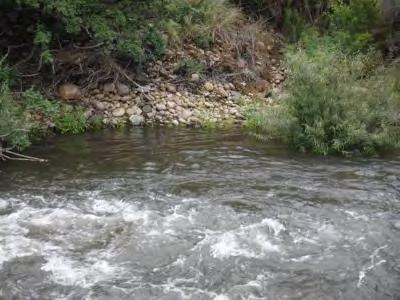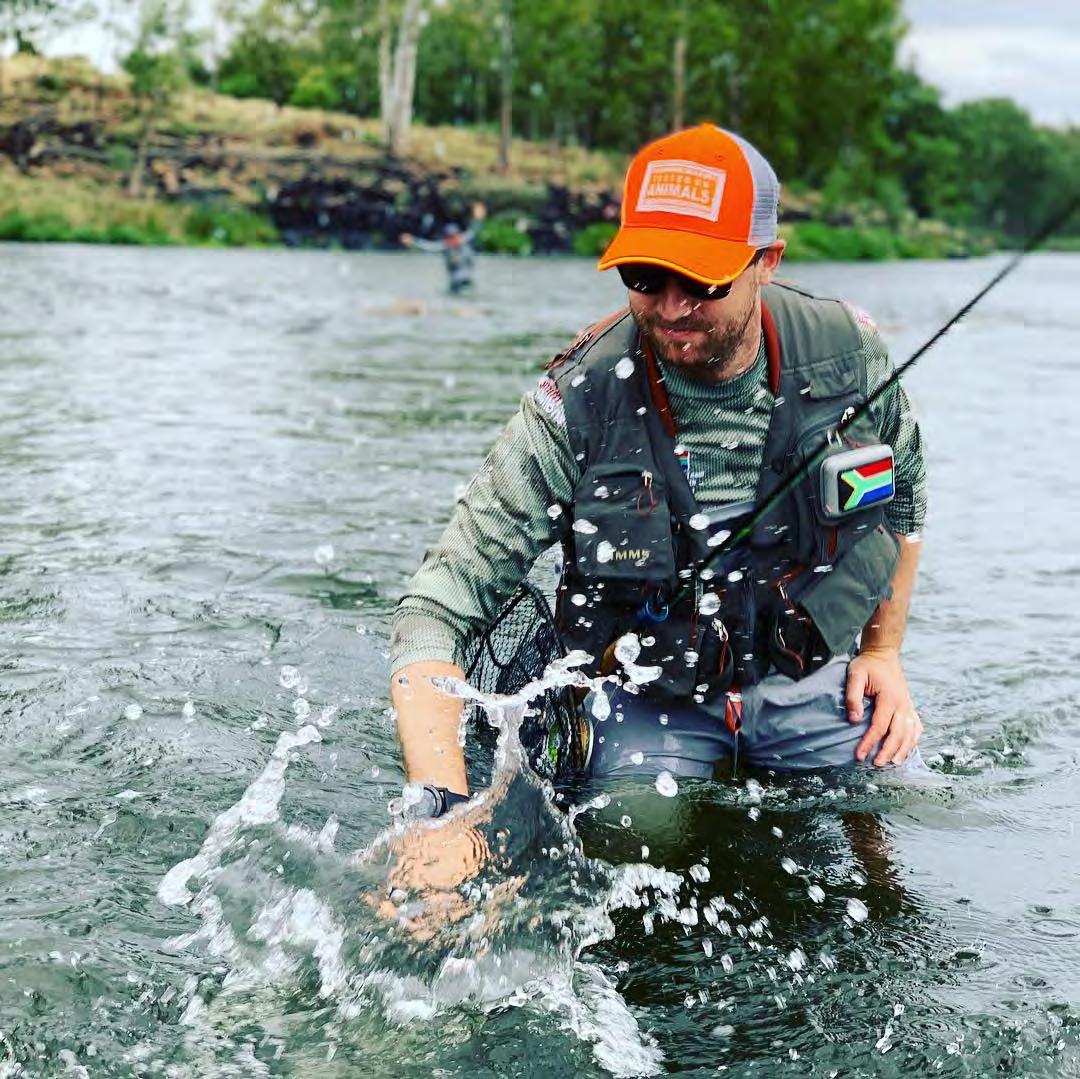
7 minute read
Stepping Up To The Water Part 1 in a series by Brett Van Rensburg
While we all fish for our own reasons we share a common goal - to catch more fish. In this article I am going to spend time focussing on simple changes you can make to your fishing on a river that will certainly improve your catch rates.
A question that I am often asked when arriving at a river that we are about to fish is, what flies should we put on? Ten years ago I would have grabbed my box and started running through various options.
Advertisement
Today I am far less inclined to look at flies but rather the water and conditions we will be fishing in. The truth is that a fish is far more likely to eat an average fly that is well presented at a good speed, at the right depth in a good piece of water than a perfect fly that isn’t anywhere near to it.
To better your catch rate you want to keep your flies in the fishy “hotspots” for long periods of time.
Having said that, let's unpack this idea. The first thing to consider when arriving at the venue you are about to fish is weather conditions. Is it extremely hot or overcast? What is the wind doing? What is the pressure up to? All these factors will contribute to the feeding habits of different species of fish.
Let’s look at trout in a river. If the weather is very warm for a period of several days the fish will start looking for deeper pockets and pools where they are able to hide in the cooler water. They will most certainly feed in the early morning and late afternoon when temperatures are lower and their energy levels are higher. This is a common rule understood by most competent fisherman, however how does this change if you were ishing the same river for yellowfish?
Interestingly enough, the way that these fish feed in the heat is completely different to trout.
Yellowfish tend to feed off the bottom with their heads aimed towards the gravel and rocks. When the weather is cooler they tend to stick to this method of feeding, but when the weather is hot and the sun is at its highest this species tends to look upwards and feeding starts to take place slightly higher in the water column. Often an angler on the Vaal will have a lot of success in the first few hours of the morning by fishing heavy nymph patterns bumping along the bottom. As the heat of the day sets in they tend to catch far less - sadly this is often blamed on the heat. In my personal experience yellowfish tend to feed more in the heat, a lot more! The trick here is to lift your rod tip and ensure that your flies are not right on the bottom of the river but rather 10-20cm from it. This little trick will improve your midday catch rates substantially when fishing for yellowfish. As an added bonus these fish tend to hit the flies much harder when fishing higher in the water column.
Alrighty then. Now that you understand the conditions and have an idea of where the fish will be feedings, lets classify our river.
A common mistake I find fisherman making is the tendency to fish where the fish aren’t. I know this seems like a crazy comment but it’s very often true.
Although it’s not a perfect science, river fish tend to hold in similar types of water and, by fishing these hotspots, you will increase your chances of success substantially. Whether fishing in a competition session or just out on the water with mates I always classify my water into three categories, A,B and C water. As I walk my beat I break my water sections up into these categories. The idea is that my A category water should hold the largest numbers of fish and, if I don’t find success in this water, I move onto my B water.

This process continues until I catch fish or run out of water. By doing this I am also able to manage my time on the water, spending as much time as possible in my fishy hotspots. Also important is balancing your time in a hole, most fisherman will sit in one spot and completely destroy it before they leave. A good trick is to catch a handful of fish and then move to a different spot allowing the hole to rest, the fish will very quickly move back into this space, allowing you to get good numbers out of this spot for a longer period of time.
A great example of river classification combined with time management came in the second session of the 2018 Commonwealth Fly fishing Championships held in Ireland. I was given nearly 1km of river as my beat - very daunting. When walking the river I identified 5 pieces of A category water and a number of B water.
My initial plan was to spend even amounts of time on each piece of water but I quickly realised this would not work. After just 10 same as the first. Holes 3,4 and 5 were very different and held large numbers of bigger fish. When I had reached the top of my beat I had just an hour left of the session, instead of fishing the whole river section again I just fished the final three holes which produced good numbers of size fish. This decision and time management on the water allowed me to win the overall session.

A well defined eddy forws in the opposite direction to the riffle at the head of a run

Hmmmm, now we know where to fish and when to fish… what’s left? Oh yes! How to fish?
A pool of deep, slow water with a shallow tailout flows into a classic deep run with uniform currents

minutes in the first hole I had caught 8 fish of whic h onl y 1 fish measure d to th e competition standard. I quickly moved to the second identified spot which was exactly the It's all happening here - A riffle is formed where the flow goes over a shallow rocky bottom on the left bank. The run tails out in a narrow passage. There's even a small and very accessible eddy on the right bank.

Picking the right technique and presenting it correctly then becomes extremely important. It is at this point that we start to consider leader setup, tippet diameter, weight of flies and technique. The type of river and the flow you are working with will to a large degree determine the technique that you should use.
Now let’s find the depth! This is when the weight of your flies comes into play. If you feel like your flies are not drifting at the right level, you are probably right. Change them until you find that warm fuzzy feeling that you are looking for. Keep in mind the species, where they feed at certain times of day and the specific conditions facing you. Be mindful and get the flies in the fishy zone.
On one a recent trip to the Vaal I spent some time working on technique with a longtime fishing mate, Barry Ubsdell. What was interesting was that while Euro nymphing Barry found much higher success with a very high rod tip and brass beads. This meant that the flies were drifting higher in the water column in the heat of the day and the fish were feeding in this zone. This success was due to making minor changes and testing the water at different levels.
Wow, all this said and we haven’t even looked at a single fly. You see my point! Now that you have looked at conditions, the water and presentation it’s time to pick a fly. Now please don’t get me wrong, fly selection is certainly a key contributor to catching good numbers of fish, and time should be spent making sure you use the right flies.
My hopes in this article are more to highlight the importance of getting it all right, rather than just picking a feather out of a box - Brett.
Brett van Rensburg came to our attention when while representing South Africa as a Protea Angler at the Commonwealth Games. The team updates that he would deliver daily on a supporter's chat group had us in stitches and we knew that we had to have him aboard.
Brett has kindly offered to share his knowledge and insights with us over the course of a series of articles.
His instagram handle is flyfishing_sa











